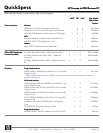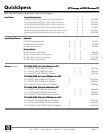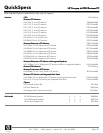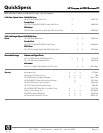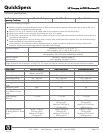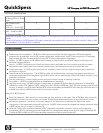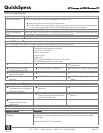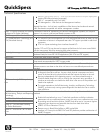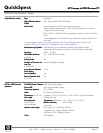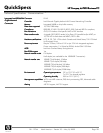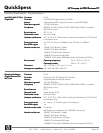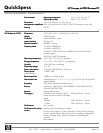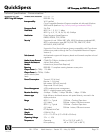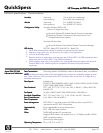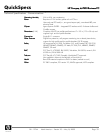
Remote Configuration (RCFG) – Uses root certificate hashes for simpler deployment
(existing PSK method remains supported)
802.1x – compatibility with Cisco NAC
WS-Management – Web Services for Management interface
Network Heuristics – built-in basic capabilities to filter inbound and outbound network
traffic. Backwards compatible with earlier management consoles
DASH 1.0 support (Desktop and mobile
Architecture for System Hardware)
A standards initiative for representing out-of-band management capability for computer
systems. It is a secure, web-services based successor to ASF.
ASF 2.0 support (Alert Standard Format)
Industry-standard specification for network alerting in operating system-absent environments
TXT (Trusted Execution Technology) and
VT-d (Virtualized devices)
TXT allows for secure management (via TPM) and measured launch of VMM, as well
as teardown of secrets in unexpected reset case. TXT support provided in select Intel
processors.
VT-d is a chipset technology that virtualizes directed I/O
Together, TXT and VT-d may be used to support verified launch of a known trusted VMM
that also may protect VMs from accessing each other's memory.
Virtual Appliance support
Tested support for Virtual Appliance (VA) 2.6 ISV applications.
Hardware ready for future VA 3.0 ISV applications (with VT-d and TXT support)
Computrace
Computrace agent support standard
Tower
Product can be oriented as a tower (in addition to desktop orientation)
Tower stand recommended for USDT in tower mode
Drive Lock*
Implementation of the industry standard ATA Security feature set. When enabled, it prevents
software access to user data on the drive until one or two user-defined passwords are
provided.
Drive Self Tests (DPS)*
Drive Protection System
A diagnostic hard drive self test. It scans critical physical components and every
sector of the hard drive for physical faults and then reports any faults to the user.
Running independently of the operating system, it can be accessed through a
Windows-based diagnostics utility or through the computer's setup procedure. It
produces an evaluation on whether the hard drive is the source of the problem and
needs to be replaced.
The system expands on the Self-Monitoring, Analysis, and Reporting Technology
(SMART), a continuously running systems diagnostic that alerts the user to certain
types of failures.
DPS Access through F10 Setup during
Boot
SMART Technology*
(Self-Monitoring, Analysis and Reporting
Technology)
Allows hard drives to monitor their own health and to raise flags if imminent failures were
predicted
Predicts failures before they occur. Tracks fault prediction and failure indication
parameters such as re-allocated sector count, spin retry count, calibration retry count
By avoiding actual hard drive failures, SMART hard drives act as "insurance" against
unplanned user downtime and potential data loss from hard drive failure
IOEDC: I/O Error Detection Circuitry
Detects errors in Read/Write buffers on HDD cache RAM
Interface in F10 setup for dc7800 CMT and SFF platforms provides confirmation of
SMART IV support.
SMART I – Drive Failure Prediction
SMART II – Off-Line Data Collection
SMART III – Off-Line Read Scanning
with Defect Reallocation
SMART IV – End-to-End CRC for hard
drives
* This feature is inoperable when a RAID (Redundant Array of Independent Disks) configuration is enabled.
QuickSpecs
HP Compaq dc7800 Business PC
HP Compaq dc7800 Business PCHP Compaq dc7800 Business PC
HP Compaq dc7800 Business PC
Technical Specifications
DA - 12744 North America — Version 25 — May 16, 2008
Page 26



